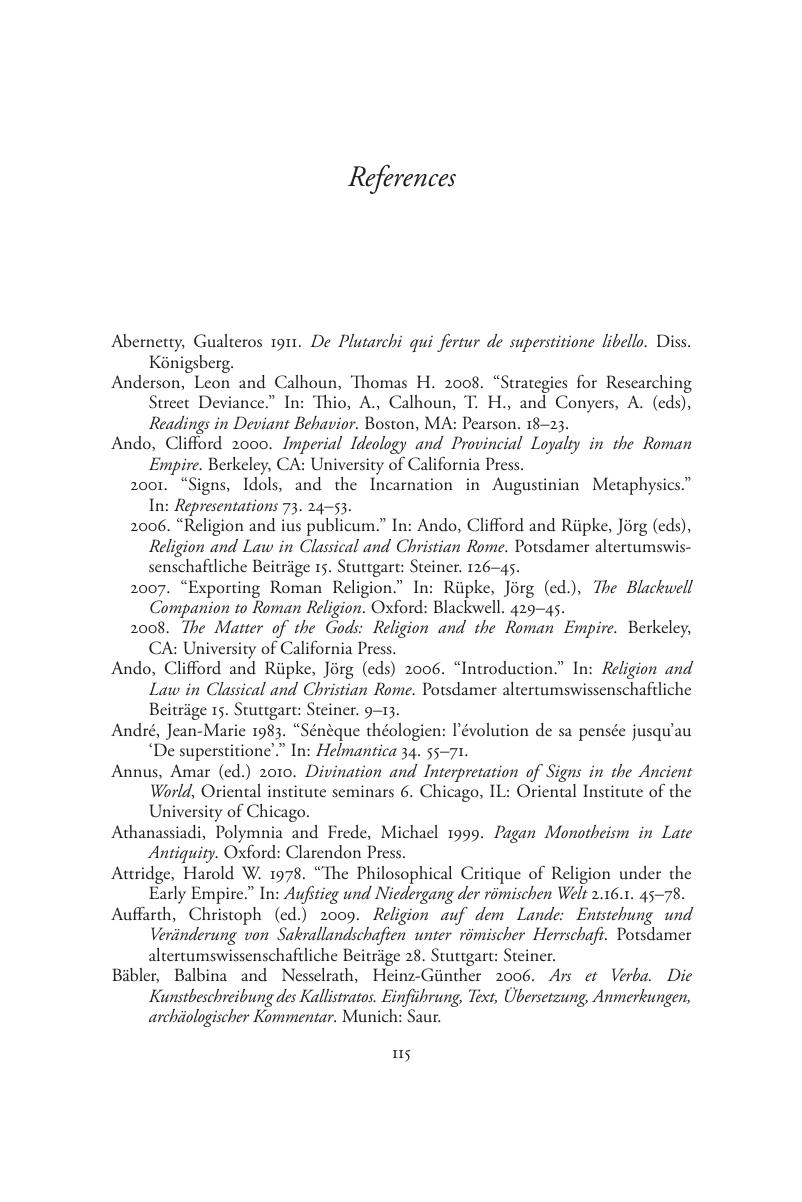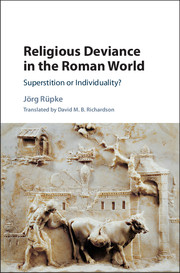Book contents
- Half title page
- Title page
- Copyright page
- Contents
- Preface
- Book part
- Chapter 1 Superstitio: conceptions of religious deviance in Roman antiquity
- Chapter 2 Creation of religious norms in the late Republic
- Chapter 3 The role of ethos and knowledge in controlling religious deviance
- Chapter 4 De superstitione: religious experiences best not had in temples
- Chapter 5 The normative discourse in Late Antiquity
- Chapter 6 The individual in a world of competing religious norms
- Chapter 7 Deviance and individuation: from Cicero to Theodosius
- Bibliography
- Index
- Index
- References
Bibliography
Published online by Cambridge University Press: 05 May 2016
- Half title page
- Title page
- Copyright page
- Contents
- Preface
- Book part
- Chapter 1 Superstitio: conceptions of religious deviance in Roman antiquity
- Chapter 2 Creation of religious norms in the late Republic
- Chapter 3 The role of ethos and knowledge in controlling religious deviance
- Chapter 4 De superstitione: religious experiences best not had in temples
- Chapter 5 The normative discourse in Late Antiquity
- Chapter 6 The individual in a world of competing religious norms
- Chapter 7 Deviance and individuation: from Cicero to Theodosius
- Bibliography
- Index
- Index
- References
Summary

- Type
- Chapter
- Information
- Religious Deviance in the Roman WorldSuperstition or Individuality?, pp. 115 - 132Publisher: Cambridge University PressPrint publication year: 2016



